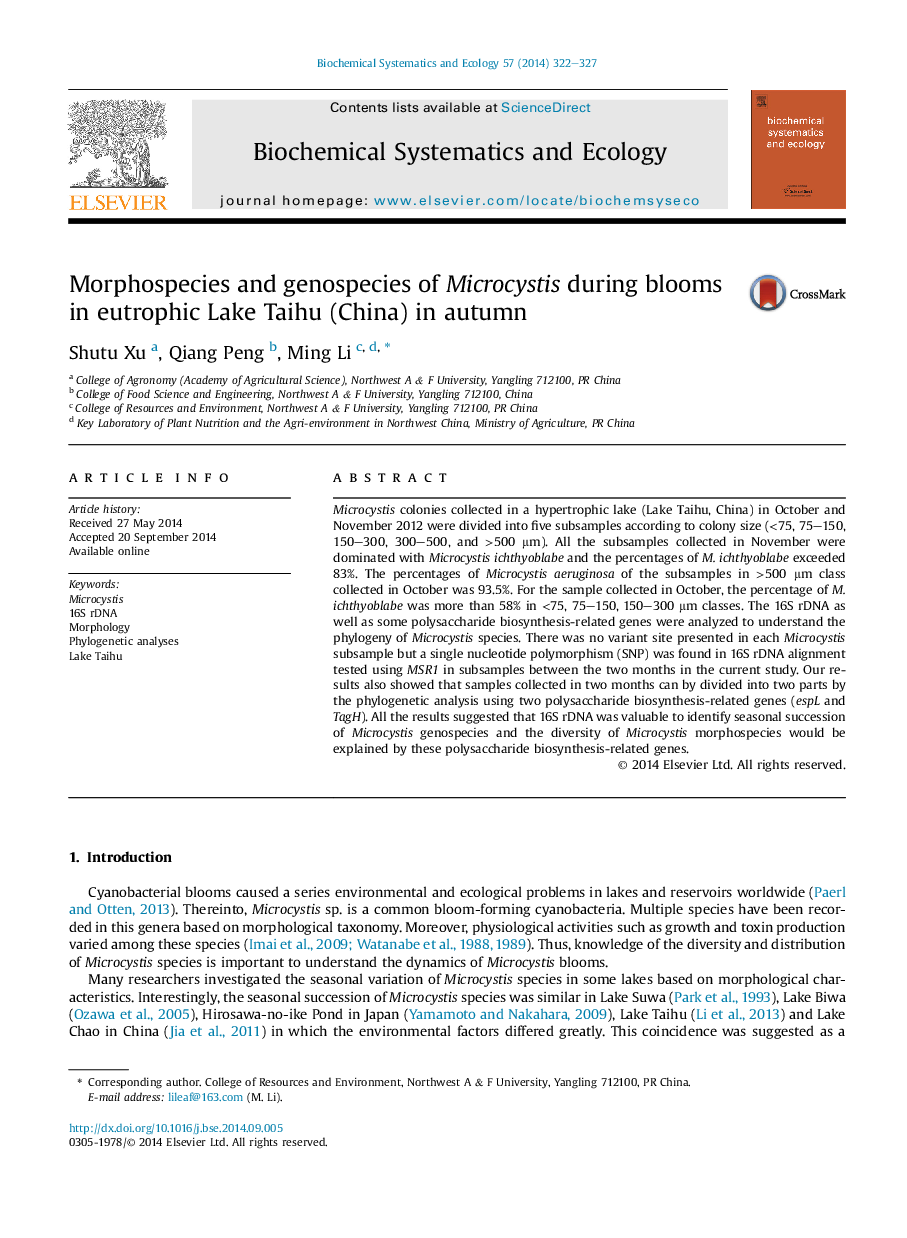| Article ID | Journal | Published Year | Pages | File Type |
|---|---|---|---|---|
| 7768489 | Biochemical Systematics and Ecology | 2014 | 6 Pages |
Abstract
Microcystis colonies collected in a hypertrophic lake (Lake Taihu, China) in October and November 2012 were divided into five subsamples according to colony size (<75, 75-150, 150-300, 300-500, and >500 μm). All the subsamples collected in November were dominated with Microcystis ichthyoblabe and the percentages of M. ichthyoblabe exceeded 83%. The percentages of Microcystis aeruginosa of the subsamples in >500 μm class collected in October was 93.5%. For the sample collected in October, the percentage of M. ichthyoblabe was more than 58% in <75, 75-150, 150-300 μm classes. The 16S rDNA as well as some polysaccharide biosynthesis-related genes were analyzed to understand the phylogeny of Microcystis species. There was no variant site presented in each Microcystis subsample but a single nucleotide polymorphism (SNP) was found in 16S rDNA alignment tested using MSR1 in subsamples between the two months in the current study. Our results also showed that samples collected in two months can by divided into two parts by the phylogenetic analysis using two polysaccharide biosynthesis-related genes (espL and TagH). All the results suggested that 16S rDNA was valuable to identify seasonal succession of Microcystis genospecies and the diversity of Microcystis morphospecies would be explained by these polysaccharide biosynthesis-related genes.
Related Topics
Physical Sciences and Engineering
Chemistry
Organic Chemistry
Authors
Shutu Xu, Qiang Peng, Ming Li,
